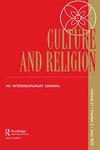The power of genres and the project of secularisation: publishing the Gesar epic in contemporary China
IF 0.5
0 RELIGION
引用次数: 3
Abstract
ABSTRACT This article examines how published episodes from the life of Gesar—a king described in Tibetan epics—are assigned literary classifications inside and outside China. Outside of China, Tibetan publishers categorise these narratives using the explicitly Buddhist terms ‘tale of liberation’ (rnam thar) and ‘expression of realisation’ (rtogs brjod). By contrast, state-invested publishers within China designate these narratives as ‘story’ (sgrung). Although this agenda is never stated explicitly, categorising narratives from Tibetan tradition as ‘stories’ rather than Buddhist genres serves the Chinese state’s goals of constructing a ‘secular’ Tibetan culture removed from the traditional authority of Buddhist institutions. Secularising the Gesar epic helps to produce a Tibetan citizen prepared to participate in and cede authority to China’s multi-ethnic nation state, while also relegating Buddhism to a personal, private, and apolitical phenomenon. This case study has larger implications for analysing genre as a site where ideas of religion and secularity are negotiated.体裁的力量与世俗化的工程:当代中国格萨尔史诗的出版
摘要本文探讨了西藏史诗中描述的国王格萨尔生平的已出版片段是如何在中国内外进行文学分类的。在中国以外,西藏出版商使用明确的佛教术语“解放的故事”(rnam thar)和“实现的表达”(rtogs-brjod)对这些叙事进行分类。相比之下,中国国有投资的出版商将这些故事称为“故事”(sgrung)。尽管这一议程从未明确说明,但将西藏传统的叙事归类为“故事”而非佛教流派,有助于中国政府构建一种脱离佛教机构传统权威的“世俗”西藏文化的目标。将《格萨尔》史诗世俗化有助于培养一个准备参与并将权力移交给中国多民族国家的西藏公民,同时也将佛教降级为一种个人、私人和非政治现象。这一案例研究对分析作为宗教和世俗思想谈判场所的流派具有更大的意义。
本文章由计算机程序翻译,如有差异,请以英文原文为准。
求助全文
约1分钟内获得全文
求助全文

 求助内容:
求助内容: 应助结果提醒方式:
应助结果提醒方式:


